|
View previous topic :: View next topic
|
|
| Author |
Message |
AfterHours
Gender: Male
Location: The Zone
- #111
- Posted: 05/26/2022 22:00
- Post subject:
|
Gian Lorenzo Bernini (1598 - 1680)
Best Works:
7.8/10: Apollo and Daphne (1625) [Sculpture]
8.0/10: The Ecstasy of Saint Teresa (1652) [Sculpture, Architecture and Painting]
8.5/10: St. Peter's Basilica - Principal Architects: Donato Bramante (1503 - 1514); Michelangelo Buonarroti (1546 - 1564); Carlo Maderno (1603 - 1629); Gian Lorenzo Bernini (1629 - 1676) (Building completed and opened 1626; various additions thereafter) [Architecture]
Apollo and Daphne - Gian Lorenzo Bernini (1625) [Sculpture]

Thumbnail. Click to enlarge.
MAIN VIEW - VERY LARGE: https://upload.wikimedia.org/wikipedia/...ped%29.jpg
ALTERNATE VIEW - FIGURE'S LEFT SIDES - VERY LARGE: https://upload.wikimedia.org/wikipedia/...C04591.jpg
ALTERNATE VIEW - FIGURE'S LEFT SIDES - VERY LARGE: https://www.flickr.com/photos/jorge-11/48137202612
ALTERNATE VIEW - FRONT: https://www.flickr.com/photos/profzucke...otostream/
DETAIL - LOWER FRONT: https://www.flickr.com/photos/profzucke...otostream/
DETAIL - BASE FRONT: https://www.flickr.com/photos/profzucke...otostream/
DETAIL - BASE FRONT: https://www.flickr.com/photos/profzucke...otostream/
DETAIL - UPPER RIGHT: https://upload.wikimedia.org/wikipedia/...015-1a.jpg
DETAIL - UPPER RIGHT: https://www.flickr.com/photos/profzucker/30558368563/
DETAIL - LOWER RIGHT: https://www.flickr.com/photos/profzucke...otostream/
DETAIL - BASE RIGHT: https://www.flickr.com/photos/profzucke...otostream/
DETAIL - BACK: https://www.flickr.com/photos/profzucke...otostream/
The Ecstasy of Saint Teresa - Gian Lorenzo Bernini (1652) [Sculpture, Architecture and Painting]

Thumbnail. Click to enlarge.
WIDE VIEW - SCULPTURE AND ARCHITECTURAL ENSEMBLE: https://upload.wikimedia.org/wikipedia/...me_HDR.jpg
MAIN VIEW - VERY LARGE - MAIN SCENE: Angel and Saint Teresa in Ecstasy: https://upload.wikimedia.org/wikipedia/...015-2a.jpg
LOW ANGLE VIEW - INCLUDES DOVE, TROMPE L'OEIL VAULT AND LIGHT FROM ABOVE: https://www.independent.ie/world-news/e...e92c48be_1
VIRTUAL PANORAMIC VIEW - FULL VIEW (Click below where it says "St. Teresa"): https://www.manywhere.net/santa-maria-d...a-in-rome/
ANGLED VIEW - MAIN SCENE: https://www.flickr.com/photos/profzucke...otostream/
ANGLED VIEW - MAIN SCENE: https://www.flickr.com/photos/profzucke...otostream/
DETAIL - MAIN SCENE: https://www.flickr.com/photos/profzucke...otostream/
DETAIL - MAIN SCENE: https://www.flickr.com/photos/profzucker/50989093253/
DETAIL - MAIN SCENE: https://www.flickr.com/photos/profzucke...otostream/
DETAIL - MAIN SCENE: https://www.flickr.com/photos/profzucke...otostream/
LOW ANGLE VIEW - TROMPE L'OIEL VAULT: https://www.flickr.com/photos/profzucke...otostream/
DETAIL - DOVE, ANGELS, TROMPE L'OEIL VAULT: https://www.flickr.com/photos/profzucke...otostream/
DETAIL - ANGELS, TROMPE L'OEIL VAULT: https://www.flickr.com/photos/profzucke...otostream/
DETAIL - STAINED GLASS "LIGHT PASSAGE": https://www.flickr.com/photos/profzucke...otostream/
RIGHT SIDE VIEW - RIGHT WITNESS BOX: https://www.flickr.com/photos/profzucke...otostream/
RIGHT SIDE VIEW - RIGHT WITNESS BOX: https://upload.wikimedia.org/wikipedia/...ttoria.jpg
LEFT SIDE AND MID VIEW - LEFT WITNESS BOX ADN MAIN SCENE: https://upload.wikimedia.org/wikipedia/...ia_-_2.jpg
LEFT SIDE VIEW - LEFT WITNESS BOX: https://www.flickr.com/photos/profzucke...otostream/
DETAIL - LEFT SIDE VIEW - LEFT WITNESS BOX: https://www.flickr.com/photos/profzucke...otostream/
IMAGE FOR SCALE - Cornaro Chapel, Santa Maria della Vittoria, Rome: https://www.flickr.com/photos/profzucker/7827295048
Rough draft / outline / Misc notes for future analysis...
-Bernini was probably the greatest Baroque sculptor and architect ... also a painter and stage director of theater
-His Ecstasy of St Teresa fuses all his talents: the remarkable sculpting technique, the flawlessly composed architectural setting, the theatrical setting, the "stage" lighting, the trompe l'eil painting of the ceiling vault above the central scene, the (light) painting of the sculptures and the painting of the architectural setting...
-Here Bernini accomplishes a "total work of art". This was first accomplished "in essence" (if not in true, physical, actuality) by Michelangelo with the Sistine Chapel through the fictive suggestion of paint: painted architecture that is 3D and looks completely real, "sculpted" paintings (illusionistic, 3-dimensional bodies and forms that look and are rendered as if "sculptures" yet are entirely paint), and of course it is all itself a "painting" (most strongly pronounced by the astounding application and variety of color), plus the singular composition of "visual poetry" (so in a strong sense, including the art of poetry too, in visual form, Michelangelo's own and perhaps through allusions to Dante and others). This was next (nearly) accomplished by Michelangelo in the Medici Chapel (but the painting(s) planned were never completed). Here Bernini accomplishes the "total work of art" in full physical form: sculpture, architecture, fresco paint, painted sculpture and painted architecture, theatrical lighting effects, each composed and completed himself.
-The architectural pillars enclosing St Teresa and the angel acts as if a "stage" with "curtains" (the pillars) opening up and staging focal point of the scene
-To the left and right in balconies, are the patrons (on the left) and religious figures (on the right) (add details, names...)
-The central scene of St Teresa and Angel. Based (partially) on Teresa's own words: "Beside me, on the left, appeared an angel in bodily form.... He was not tall but short, and very beautiful; and his face was so aflame that he appeared to be one of the highest rank of angels, who seem to be all on fire.... In his hands I saw a great golden spear, and at the iron tip there appeared to be a point of fire. This he plunged into my heart several times so that it penetrated to my entrails. When he pulled it out I felt that he took them with it, and left me utterly consumed by the great love of God. The pain was so severe that it made me utter several moans. The sweetness caused by this intense pain is so extreme that one cannot possibly wish it to cease, nor is one's soul content with anything but God. This is not a physical but a spiritual pain, though the body has some share in it—even a considerable share."
-Bernini includes or alters or imagines several details that increases the sensuality of the scene (and was quite controversial) to seem (very) ambiguous between a sexual/erotic experience and that of the spiritual. Firstly, the sensual look, open mouth and potentially orgasmic face of Teresa. The displaying of her feet (controversial because she is a saint), the open spread of her legs to the Angel. The Angel (seemingly unnecessarily) opening her clothing in her breast area to stab the spear. All of this is part in line with Teresa's own account, part up to Bernini's creative imagination (her account, which may be interpreted as an orgasm just as it is interpreted as a purely spiritual experience; not that Teresa ever herself said as much, but by the way she describes it and the -- very controversial -- idea that, Teresa, albeit a presumably chaste woman, may have herself misinterpreted her own orgasm as that of religious ecstasy).
-Bernini, a deeply religious man, was probably not trying to blaspheme in a direct and scandalous sense, but rather increasing the complexity of interpretation as a metaphor for the multitude of viewpoints prevalent around St. Teresa's saint-hood, for which the whole work interchangeably projects and expresses in each of its facets.
-Further details of the central sculptural duo are masterful: the way in which Bernini has composed Teresa's clothing to express a "buoyancy, a weightlessness" above the levitation of herself upon the cloud, in accompaniment with the flying angel, while also (her clothing) expressing a tremendous shudder or tremor of ecstasy through her whole being, but (crucially) also replacing or ridding of the physicality of her body. He has expressed the idea that her body, her sense of physical shape or attachment, has been lost in the experience -- sculpturally, in physical rendering of her dress: unlike other sculptures, where one can still make out the rendering of form behind the clothing, this is lost almost completely in Bernini's rendering of Teresa -- (besides her hands and head and feet outside of the clothing) the sense of a rendered body beneath the clothing is gone, thus enhancing the sense of her experience of ecstasy being simultaneously physical and spiritual, a "loss of self and one's sense of physical reality".
-With the Angel, Bernini renders a face that is both delighted/ecstatic and curious or knowing (and potentially ambiguous, left open to multiple interpretations), the body and head turning to deliver another stabbing motion, or perhaps just upon the conclusion of pulling the spear back out of her. The clothing of the angel is rendered as if flowing in the wind or even flame-like swirling around the body (also the hair, flame-like, billowing), both of which may symbolically allude to Teresa's account. Adding to Teresa's account that the Angel "...he plunged into my heart several times so that it penetrated to my entrails. When he pulled it out I felt that he took them with it..." is that her clothing is missing the bodily form (as pointed out above), thus also expressing the loss of entrails and the doubled-feeling of pain/ecstasy she is under.
-To the right/left are the theatrical settings of balconies, with the spectators (the familial patrons of Bernini's work; in the opposite balcony the religious figures of the Church), "watching" the scene. Curious, some are shown to be looking towards the central scene, others looking away, discussing the event, but nevertheless not seen to be looking at the scene. The setting behind them (inside the balcony) is fictive space, in sculpture, not "real space". It is ambiguous whether they are truly witnessing the event or whether they are blind to the reality of the miracle (probably can be read both ways, as is much of the work). So, this is another clue to the work's depth, interpretation and meaning.
-Masterfully by Bernini, the figures in the balconies are angled at right angles to the central scene so that they wouldn't really be able to see it or have a direct point of view into the scene, because it is also enclosed in it's own architectural space and setting (by its pillars).
-Further, the viewer (us or Bernini or anyone, outside the scenography) is the only one capable of consuming and taking into account each viewpoint, and drawing conclusions from all of it, in part, and/or combined, thus determining to declare Teresa a saint and the occurance a miracle.
-Further, the trompe l'oeil vault above Teresa (showing the Holy Ghost casting above her), and the massive (gilded) panorama of suns rays casting down into her space with the Angel. It is another fascinating point about the composition that the Holy Ghost above and the light is really only viewable from her point of view, or by the viewer (us) assuming her point of view (looking up, bending somewhat backwards).
-Thus the work is full of ambiguities, double-meanings: as regards its sculptures which are both life-sized (to render "reality") and the fictive sculpture/architectural "space" behind the balconies (to render "reality"). Further the entire ensemble is being expressed through the scenography of theatrical artifice by Bernini. Bernini, further, makes masterful use of perspective to draw the viewer into the scene and its composition (the perspective lines, all "orthoganals", all direct one into the center of the main scene, aligned to the cross of the altar (below) and the exact center of Teresa and the Angel (above) ... plus the composition of the blue-golden orange-white paint of the architecture and figures, directs one into the central scene too. Plus the masterful use of staging the lighting the scene (by false window) and the shimmer of the gilded sun rays and trompe l'oiel vault (enhancing to glow, through the same light)... What Bernini seems to be doing is, through all these theatrical effects that simultaneously "depict" reality as much as alternating it with artifice, as staged Baroque spectacle, he is making one see and be aware of the artistic artifice of his presentation, the blatant baroque theater of it all.
-Therefore each figure and each part of its scenography are masterfully composed to pit the viewer in position to come to terms with one's faith for Teresa, the miracle being depicted. One performs this function by becoming aware of the work through its theater and artifice, and in recognition and realization of its masterly and inspiring spectacle (almost ironically) actually forms an understanding of the extraordinary resonance and impact of the experience upon her (and the multiple viewpoints therein that accompanied her eventual sainthood). The different levels of reality/artifice of each facet of the scenography forms a fascinating parallel to quandaries of her saint-hood (whether what she experienced was real or not); thus the ambiguity between the erotic or spiritual nature of her in the central scene; thus the spectators not really "seeing" the true scene; thus the whole being a theatrical presentation as opposed to a fervent attempt at a purer (less staged, less "Baroque") reality; thus the masterful artifice of its staging, lighting, gilding and trompe l'oiel effects; thus the only viewpoint that can draw upon all is that of the viewer who's sense of perspective is controlled through Bernini's compositional genius (thus Bernini is subtly making us aware of his perspective through how he has staged and conducted and directed us through the scene).
(Note: the above needs to be detailed and explained better -- including more architectural and compositional terms and specifics -- at a later time)
St. Peter's Basilica - Principal Architects: Donato Bramante (1503 - 1514); Michelangelo Buonarroti (1546 - 1564); Carlo Maderno (1603 - 1629); Gian Lorenzo Bernini (1629 - 1676) (Building completed and opened 1626; various additions thereafter) [Architecture]
Central External View:

Thumbnail. Click to enlarge.
External View - St. Peter's Square and Colonnade:
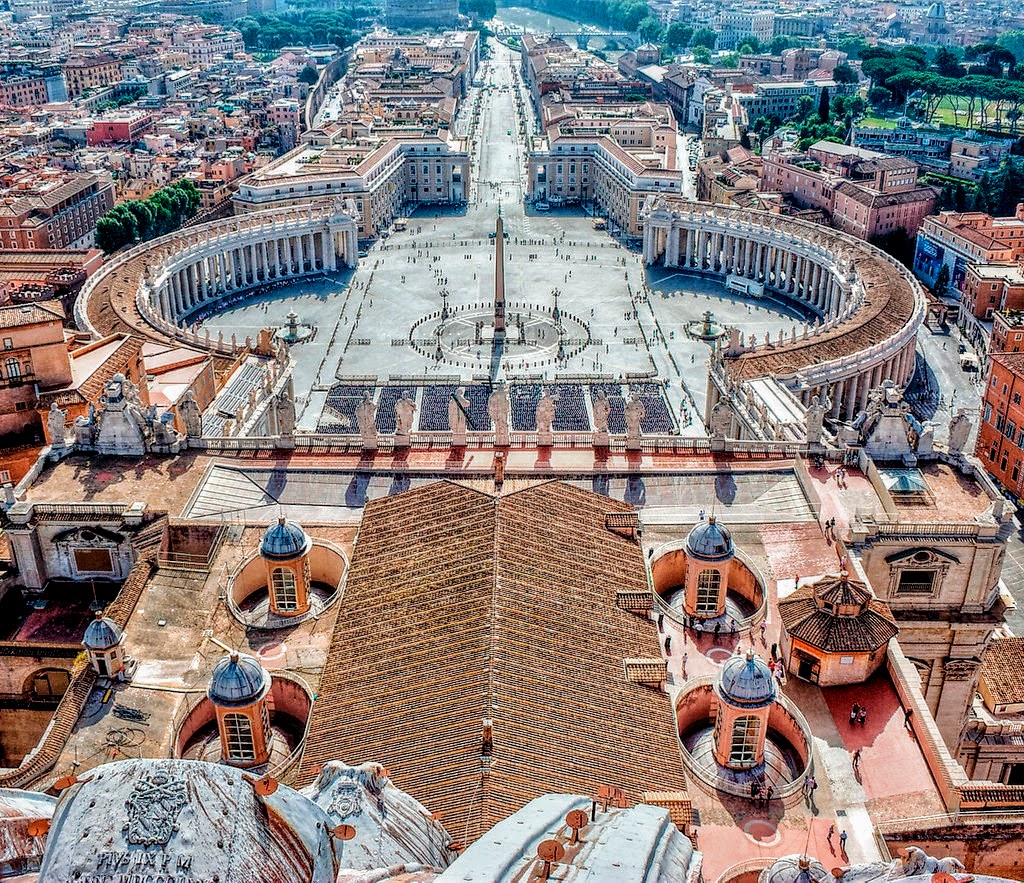
Thumbnail. Click to enlarge.
Central External View - Facade and Obelisk:

Thumbnail. Click to enlarge.
Interior - Central Nave:
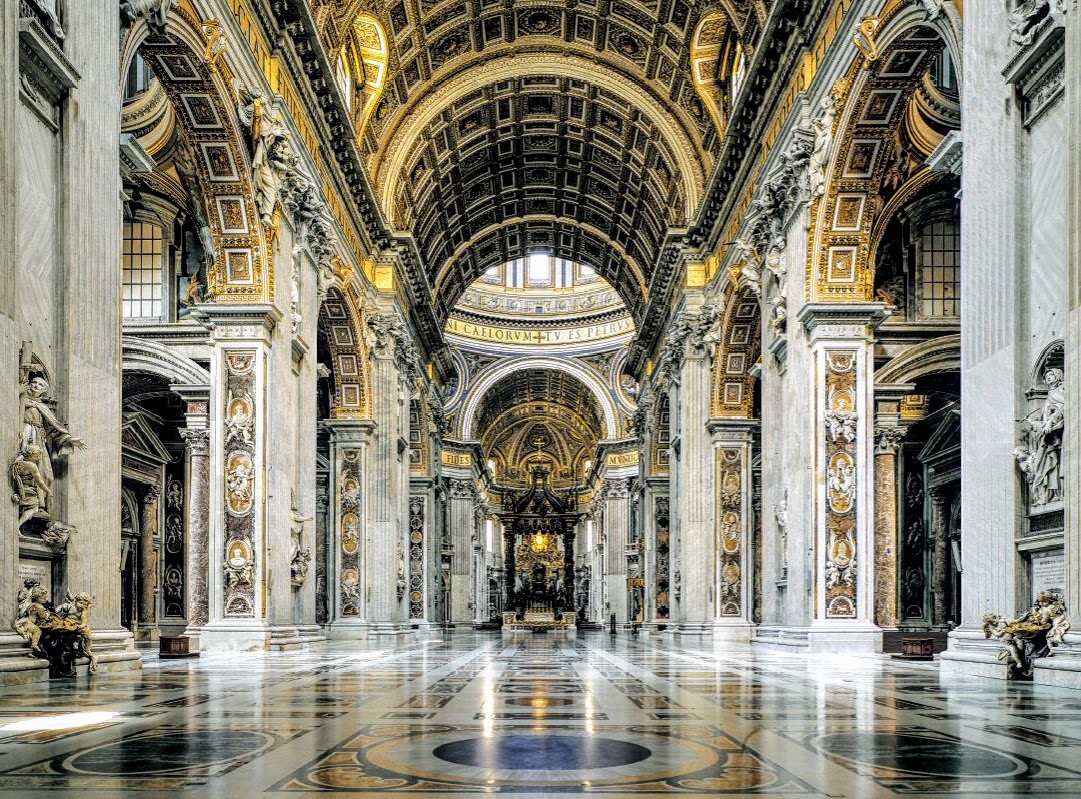
Thumbnail. Click to enlarge.
Interior - Altar and Dome:

Thumbnail. Click to enlarge.
Interior - Dome and Altar:
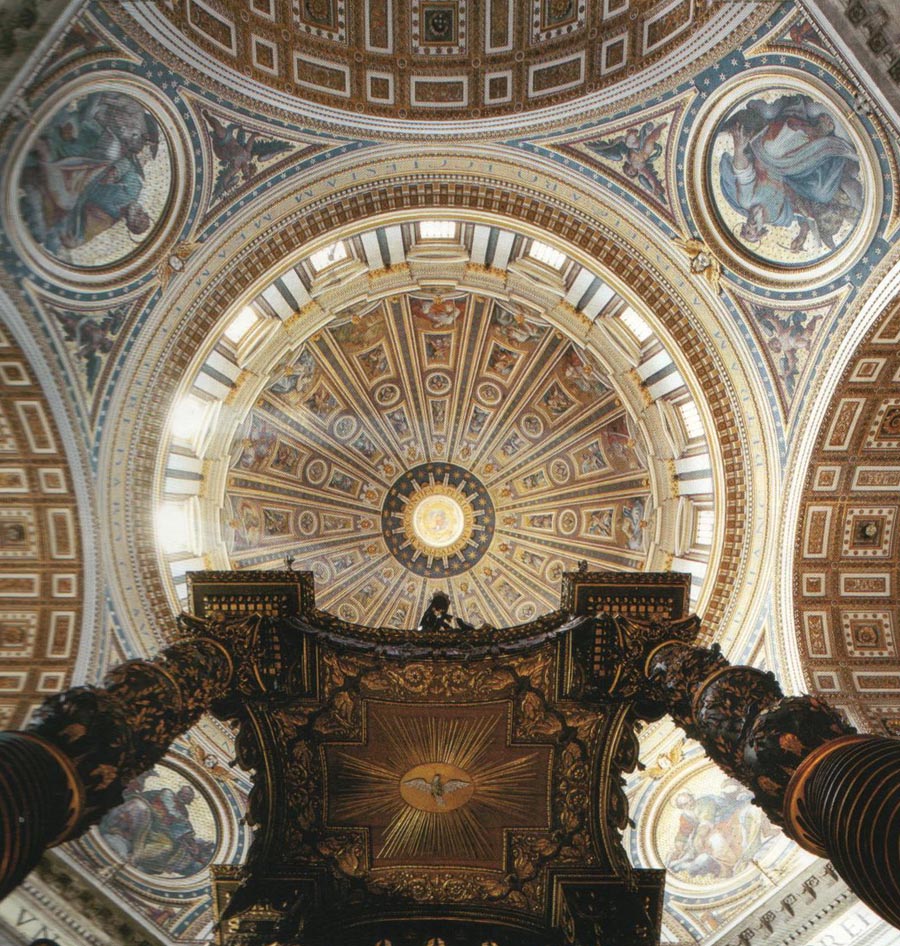
Thumbnail. Click to enlarge.
Interior - South (Left) Transept:
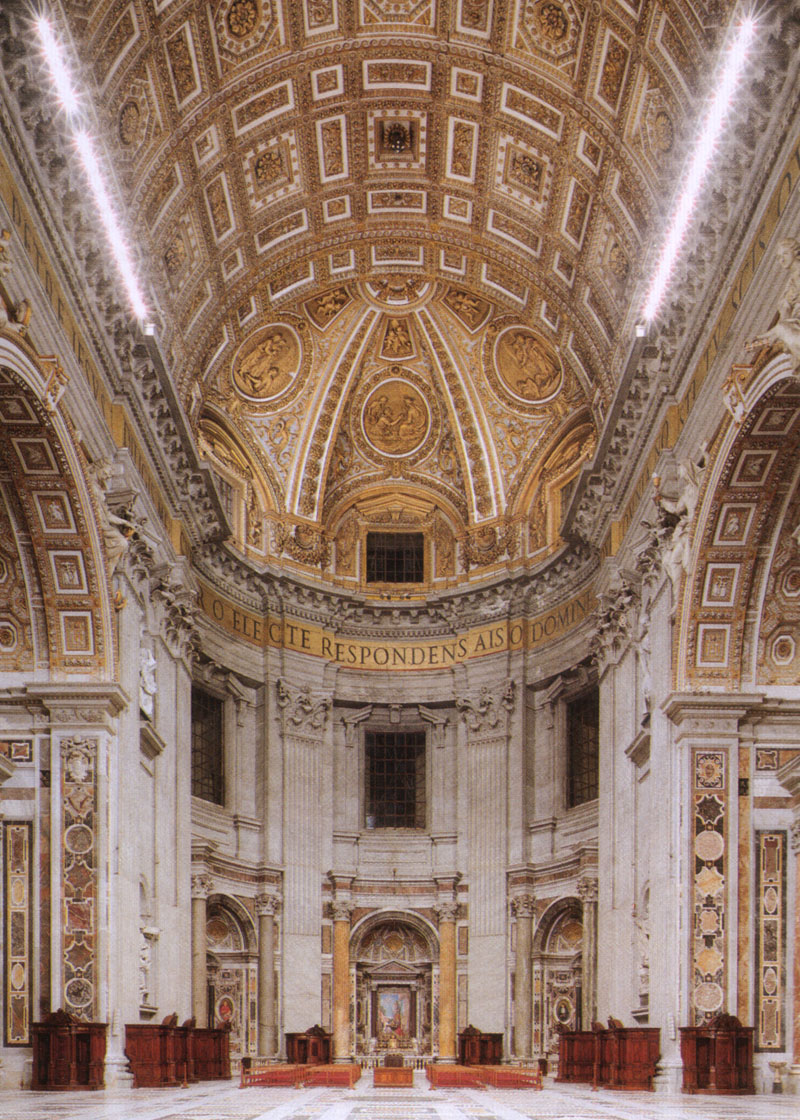
Thumbnail. Click to enlarge.
Interior - North (Right) Transept:
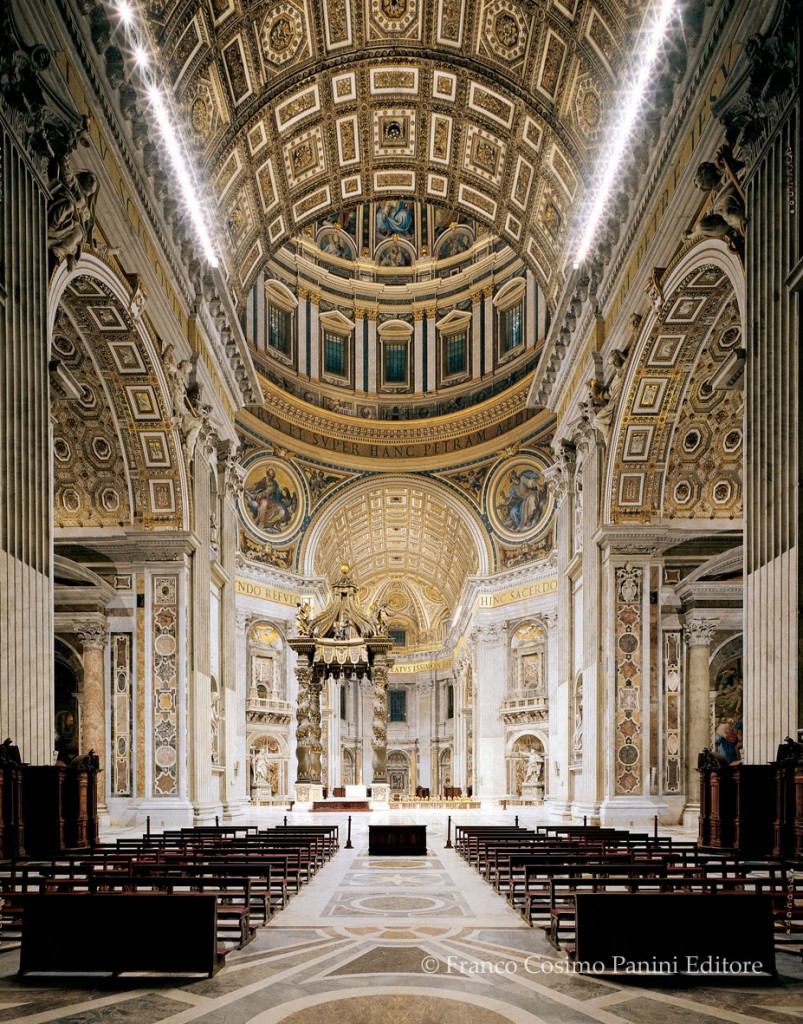
Thumbnail. Click to enlarge.
Interior - Apse and Chair of St. Peter:

VIRTUAL TOUR: https://www.vatican.va/various/basilich...ex-en.html
VIDEO - WALKING TOUR - VERY HIGH QUALITY: https://www.youtube.com/watch?v=0B54PR2kvWE
VIDEO - EXTENDED GRAND TOUR - VERY HIGH QUALITY: https://www.youtube.com/watch?v=NvjtzKUaq-s
FLOORPLAN, HISTORICAL INFO AND INSIGHTS: http://stpetersbasilica.info/floorplan.htm
HISTORICAL INFO, INSIGHTS AND PHOTOS: http://www.digital-images.net/Gallery/S...s_ext.html
_________________
Best Classical
Best Films
Best Paintings
Last edited by AfterHours on 05/12/2023 13:43; edited 15 times in total
|
|
|
|
AfterHours
Gender: Male
Location: The Zone
|
AfterHours
Gender: Male
Location: The Zone
|
AfterHours
Gender: Male
Location: The Zone
|
AfterHours
Gender: Male
Location: The Zone
|
AfterHours
Gender: Male
Location: The Zone
|
AfterHours
Gender: Male
Location: The Zone
- #117
- Posted: 05/26/2022 23:13
- Post subject:
|
Vincent van Gogh (1853 - 1890)
Best Works:
6.8/10: Self-Portrait with a Straw Hat (obverse: The Potato Peeler) (1887)
6.8/10: The Night Cafe (1888)
7.0/10: Sunflowers (1888) [3rd Version, Munich]
6.8/10: Irises (1889)
7.6/10: The Starry Night (1889)
7.3/10: Wheat Field With Cypresses (1889)
7.1/10: Cypresses (1889)
7.0/10: The Church at Auvers (1890)
6.9/10: Wheatfield with Crows (1890)
Self-Portrait with a Straw Hat (obverse: The Potato Peeler) - Vincent van Gogh (1887)

FULL VIEW - VERY LARGE: https://www.metmuseum.org/art/collection/search/436532
The Night Cafe - Vincent Van Gogh (1888)

Thumbnail. Click to enlarge.
FULL VIEW - LARGE: https://upload.wikimedia.org/wikipedia/...gh_076.jpg
IMAGE FOR SCALE: https://www.vincentvangogh.org/images/t...-photo.jpg
Sunflowers - Vincent Van Gogh (1888) [3rd Version, Munich]
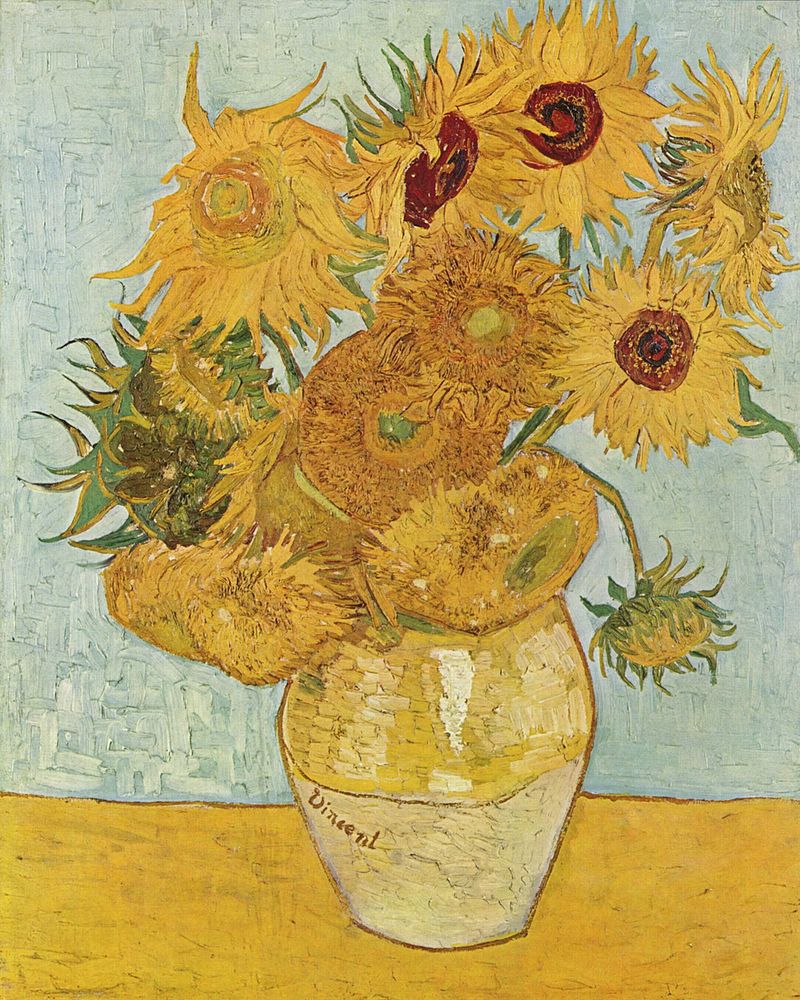
Thumbnail. Click to enlarge.
FULL VIEW: https://www.flickr.com/photos/erintheredmc/41792044191/
FULL VIEW - LARGE: https://www.flickr.com/photos/mazanto/14844837143/
FULL VIEW - VERY LARGE: https://upload.wikimedia.org/wikipedia/...gh_128.jpg
IMAGE FOR SCALE - Neue Pinakothek, Munich, Germany: https://www.dreamstime.com/royalty-free...ge20723307
Irises - Vincent van Gogh (1889)

Thumbnail. Click to enlarge.
FULL VIEW - VERY LARGE: https://upload.wikimedia.org/wikipedia/...n_Gogh.jpg
The Starry Night - Vincent van Gogh (1889)

Thumbnail. Click to enlarge.
FULL VIEW - VERY LARGE: https://upload.wikimedia.org/wikipedia/...roject.jpg
FULL VIEW - ZOOM FUNCTION: https://artsandculture.google.com/asset...3-Pg?hl=en
DETAIL - RIGHT UPPER CORNER: https://upload.wikimedia.org/wikipedia/...-right.jpg
DETAIL - LOWER LEFT SIDE: https://upload.wikimedia.org/wikipedia/...t-left.jpg
DETAIL - LOWER RIGHT CORNER: https://upload.wikimedia.org/wikipedia/...-right.jpg
FULL VIEW - MUSEUM OF MODERN ART, NEW YORK, USA: http://www.jessicasiemens.com/wp-conten...hsmall.jpg
Wheat Field With Cypresses - Vincent van Gogh (1889)
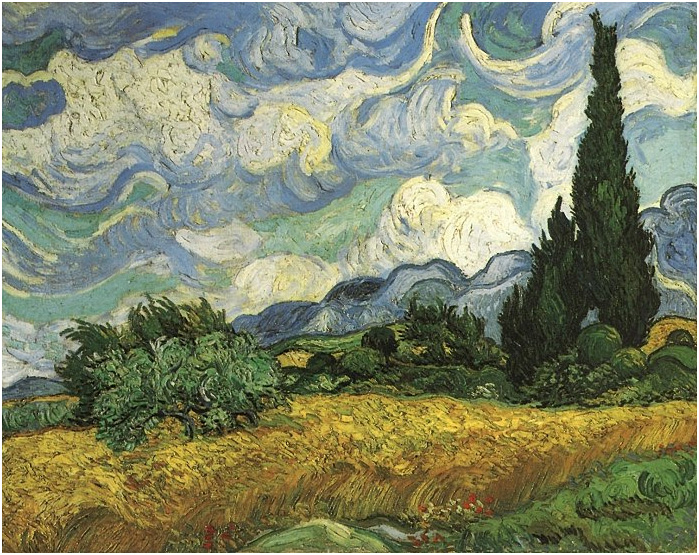
Thumbnail. Click to enlarge.
FULL VIEW - VERY LARGE - HIGH QUALITY: https://upload.wikimedia.org/wikipedia/...gh-Met.jpg
FULL VIEW - VERY LARGE - VERY HIGH QUALITY - ZOOM FUNCTION: https://www.metmuseum.org/art/collection/search/436535
Misc Notes for future analysis
Van Gogh expresses an obsessive desire to convey beauty. But the key is that it is not beauty alone, simply and freely expressed, but beauty through pain, a near frantic attempt to absolve his pain through his work by trying to experience the beauty in things. And what makes it so extraordinary is that the pain is also evoked in the act of this attempt, through the heavy strokes, the torturous calamity and anxiety of his brush work and the torturous mixture and calamity of colors. So when you view it up close (an absolute must with Van Gogh, which will also mimic and immerse oneself in his close up POV towards the canvas) realize that when you are following his brush strokes and frantic forms and obsessive anxiety and wild mix of colors you are literally witnessing too, the tortured mental phenomena of his anguish being applied to his work in an attempt to find therapy and to salvage himself through his obsessively committed and devotional act of painting (which he considered akin to a religious experience. He essentially replaced Church and religious service with trying to paint daily or as consistently as possible to try and find that solace and meaning). As a child he was haunted by seeing a grave with the name "Vincent" on it, and much of his work conveys symbology of this momento mori, often that of cypress trees (which are symbols of death, or the passage of death). His dark, torturous, obsessively painted and lined cypress trees, often reaching into the sky (heavens) to near the top of his paintings, are his internal conversation and recurring nightmare with this, and perhaps a metaphor for self, facing mortality: gesturing and reaching upwards in decrepit, anguished form, death knocking at the door. The work as a whole features a very unique array of unusual colors. The variation in color alone is its own highly emotional aspect to the work (as Van Gogh was at the expressionist vanguard of using color alone to "mean" an emotion conveyed), including the spastic array and highly unusual combinations of colors among the bushes and what-not, and including all the heavy and obsessive wavering variations on whites and unusual grayish and blue-ish shades for the sky and clouds (to highlight two very different examples in the same painting). But overall too, the strange and autumnal colors of the work combine to convey a scene that is highly ambiguous between "beauty" and "bleak"/"mournful". There is not one part of the painting that isn't struck by this ambiguity, between reflection, resignation and haunted yearnings, even troubling gestures among the bleak color in his strokes, the twisting and turning and tortured line in his forms. Van Gogh is not just painting, he is painting a highly individual psychology, baring himself through and in the act of the picture. He is not just painting a landscape, but he is painting a landscape of the soul.
Cypresses - Vincent Van Gogh (1889)

Thumbnail. Click to enlarge.
FULL VIEW - LARGE: https://www.flickr.com/photos/ilnycilnyc/35732556633/
FULL VIEW - LARGE: https://upload.wikimedia.org/wikipedia/...130999.jpg
FULL VIEW - VERY LARGE - HIGHEST QUALITY - ZOOM FUNCTION: https://www.metmuseum.org/art/collection/search/437980
The Church at Auvers - Vincent van Gogh (1890)

Thumbnail. Click to enlarge.
FULL VIEW - VERY LARGE: https://upload.wikimedia.org/wikipedia/...roject.jpg
FULL VIEW - VERY LARGE - ZOOM FUNCTION: https://artsandculture.google.com/asset...kTtA?hl=en
Wheatfield with Crows - Vincent van Gogh (1890)

Thumbnail. Click to enlarge.
FULL VIEW - VERY LARGE: https://upload.wikimedia.org/wikipedia/..._Crows.jpg
_________________
Best Classical
Best Films
Best Paintings
Last edited by AfterHours on 06/16/2022 05:15; edited 8 times in total
|
|
|
|
AfterHours
Gender: Male
Location: The Zone
|
AfterHours
Gender: Male
Location: The Zone
|
AfterHours
Gender: Male
Location: The Zone
|
|
  |
All times are GMT
|
| Page 12 of 21 |
|
|
|
You cannot post new topics in this forum
You cannot reply to topics in this forum
You cannot edit your posts in this forum
You cannot delete your posts in this forum
You cannot vote in polls in this forum
|
|
|